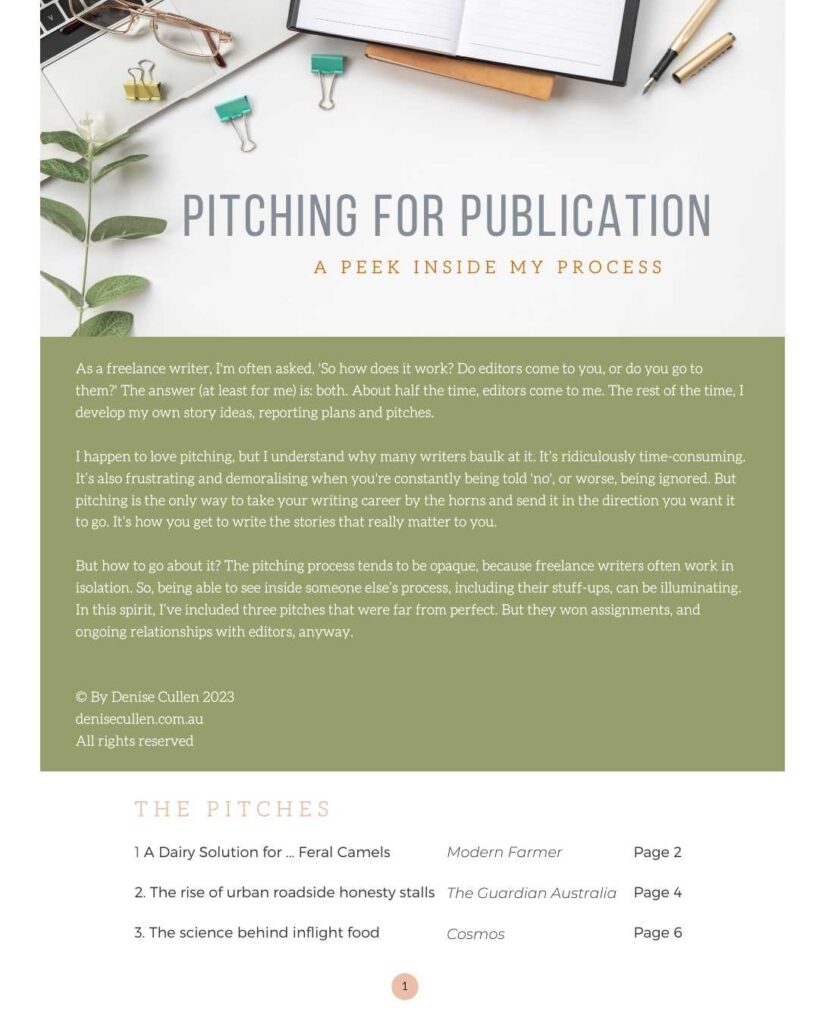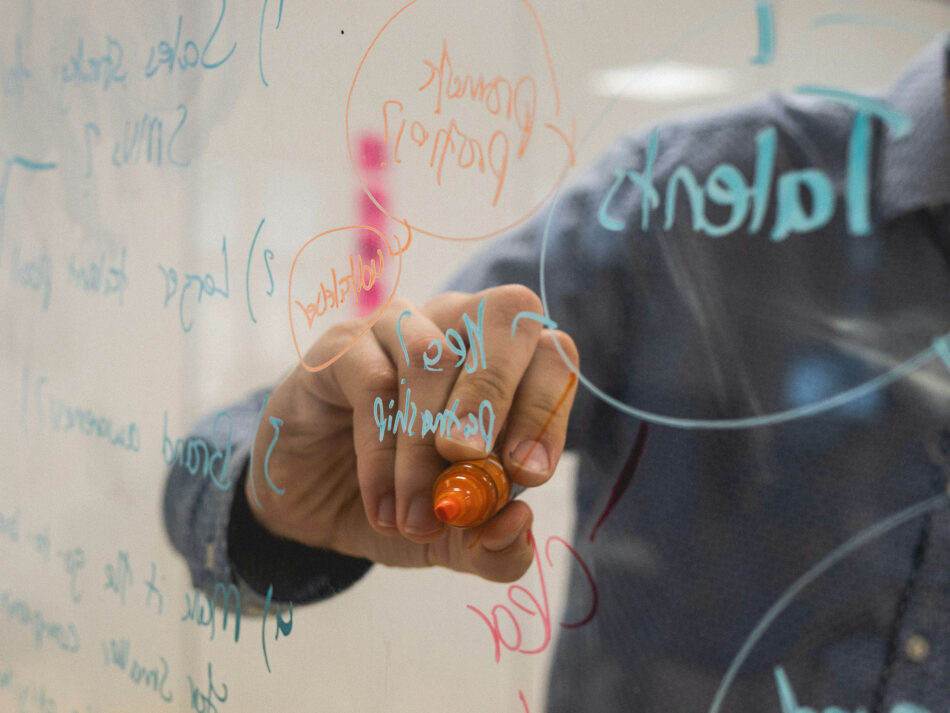Writers can reap rewards by leaning into a style of thinking that generates multiple solutions – sometimes, to problems that haven’t been identified yet.
Traditional schooling prepares us to home in on the one ‘right’ answer to a well-defined problem.
This style of thinking is called ‘convergent’ thinking.
It uses logical reasoning, and established step-by-step procedures, to generate a single, correct solution.
Convergent thinking has its place but, to do their best work, writers need to lean into the exact opposite.
Divergent thinking allows people to generate multiple solutions to any given problem.
Those ideas might be boring, pedestrian, outlandish, outstanding, or even ground-breaking.
Not all of them will work – and maybe none of them will work – but that’s not the point.
The idea of divergent thinking is to open your mind up to new possibilities.
(And then, if you must, let convergent thinking take over, to choose the ‘best’ option from the array.)
The four components of divergent thinking
American psychologist JP Guilford introduced the concepts of ‘convergent’ and ‘divergent’ thinking as far back as 1956.
He suggested that there were four components to divergent thinking:
- Fluency – the ability to generate a large quantity of ideas.
- Flexibility – the ability to shift perspectives, producing a wide variety of ideas.
- Originality – the ability to come up with unique, novel, or unusual ideas.
- Elaboration – the ability to add detail and thus develop or embellish ideas.
Identifying and addressing new problems
Strongly associated with creativity, intuition, and imagination, divergent thinking also involves imagining the world a little differently.
Thinking of it as a superpower. Divergent thinking allows writers to foresee societal, cultural, scientific and technological concerns before the wider world can even put its finger on the problem.
Think of George Orwell’s 1984. It blows my mind that this was written in 1949 – long before mass surveillance, fake news, and social control through language became global concerns.
Then there’s Margaret Atwood’s The Handmaid’s Tale, published in 1985.
This novel offered a pre-emptive warning about the erosion of women’s rights, particularly in reproductive health, decades before these issues came to the fore.

Can you become a more divergent thinker?
Divergent thinking is something which can be measured through psychometric testing – and people do naturally differ in this domain (like any other).
But you can certainly cultivate more divergent thinking simply by practising it.
Divergent thinking skills are just like muscles – the more you use them, the stronger they get.
And for writers, there are many benefits to developing your divergent thinking skills.
You can generate multiple story ideas.
When you’re low on energy, or in a rush, or battling a migraine, it’s tempting to settle on the first idea that pops into your head.
But this is a sure route to writing the same yarn that everyone else has.
Divergent thinking lets you mull over a topic and carve it up in different ways – providing more financial reward for the effort invested.
To read more on coming up with multiple ideas, read How I turned 1 trip into 14 stories.
You can explore different perspectives to shine fresh light on familiar subjects.
Coming up with energetic new angles on tired old topics makes for a more satisfying writing practice.
Look for the intersection of your various interests – such as ‘travel’ and ‘food’, or ‘travel and science’, to explore existing material through a new lens.
Also ask yourself the question: Can I provide a personal overlay to frame the facts in this story? For more tips on writing the story only you can tell, read this.
You can put form and shape to amorphous problems.
Writers besides George Orwell and Margaret Atwood have used divergent thinking to address problems that hadn’t been fully identified yet.
Rachel Carson’s Silent Spring outlined problems associated with overuse of pesticides, long before environmental concerns triggered a mainstream movement.
And Mary Shelley’s Frankenstein explored scientific ethical dilemmas long before the birth of bioethics.
Can AI replicate divergent thinking?
At this year’s TravMedia Summit, 50 per cent of the audience (comprised of journalists, content creators, and communication professionals) admitted to using AI tools like ChatGPT in their work.
But at least a third of us feel like we’re ‘cheating’ when we do so.
During his keynote address on ‘Harnessing our Superpowers: How Travel Media and Brands can work with Gen AI’, Graham Lovelace pointed out that AI models analyse the information they’re trained on by looking for connections (e.g., between words).
They then use these to build “vastly complicated” sets of statistic correlations to guide their output.
“It’s pattern matching and probabilistic outputs,” Lovelace said.
So, when presented with a common phrase like “the cat sat on the …”, the generative AI model will come up with the most likely next word, which is “mat”, rather than, say, “magic carpet” or “kitchen counter”.
“It’s very important to remember that this is not a database,” Lovelace continued.
“This is not a search engine. You don’t look up the right answer. It doesn’t know the right answer. It doesn’t know. It’s all based on the probability.”
That said, generative AI models have at their disposal vastly more data than even the most gifted human can keep in mind.
So, they can be useful kickstarters when you’re seeking inspiration, but limitations remain.
Generative AI models still struggle with true originality since their outputs are derived solely from pre-existing information.
(Read more about why Australian creators are finding themselves in a showdown with algorithms.)
They tend to produce ideas that, while varied, follow recognisable patterns – such as over-using words like ‘delve’, ‘intricate’ and ‘underscore’.
They also lack knowledge of the tangible world that humans reside in.
Lovelace points to an MIT-Harvard-Cornell study in which a large language model (LLM) proved itself adept at learning all the street names in midtown Manhattan and navigating the city with near-perfect accuracy.
But when the researchers closed as few as 1% of the streets and added detours, the LLM’s accuracy plummeted to 67%.
“Every squiggly red line you see (on the map) there is an A to B recommendation of how you get somewhere by driving your car through a building, or over a park using a flyover or tunnel that doesn’t exist,” Lovelace said.
“(AI) has no concept of what’s called a world view (and it) doesn’t know how things fit together in the physical, real world.”

Most creative humans still outperform AI
Research reveals that the most creative humans still outperform AI on divergent thinking tasks, for now at least.
Writing in Scientific Reports, researchers pitted 256 humans against three current AI chatbots using Guilford’s original Alternative Uses Test.
This requires participants to generate creative uses for everyday objects such as a rope.
Performance was assessed by both semantic distance (how remote the ideas generated were from the object names) and subjective creativity and originality ratings by humans who weren’t told that some of the responses they were rating were generated by AI.
Interestingly, on average, AI chatbots outperformed human participants.
This seemed to be due to the wider variability in human responses.
(In other words, humans were more likely than chatbots to produce some really crap responses, as well as some very good responses.)
“However, the best human ideas still matched or exceed those of the chatbots,” the researchers wrote.
“This study highlights the potential of AI as a tool to enhance creativity (but) it underscores the unique and complex nature of human creativity that may be difficult to fully replicate or surpass with AI technology.”
(Note the use of the word ‘underscore’!)
How can writers boost their divergent thinking skills?
Such research confirms that developing your divergent thinking skills is still a worthwhile endeavour. Here are several different ways to do it:
Decide you’ll become a more divergent thinker.
The first step? If convergent thinking comes naturally to you, as it does for many people, making an intentional decision to develop and make greater use of divergent thinking skills. Try some of the techniques outlined below, even when they feel uncomfortable, or even if you feel you already have the ‘right’ answer.
Stop the clock.
Though it’s not always possible, free yourself from time constraints. Deadline pressures shoehorn you into a ‘must fix this’ mindset and tempt you to skip straight to the fastest, quickest, easiest solution – that is, using convergent thinking. Relieving time pressure helps your brain shift gears into a more fluid, flexible, divergent way of thinking.
Be a freewriting fiend.
Practise freewriting regularly. Set a timer for 10-15 minutes and jot down whatever comes to mind, without filtering. Freewriting in this way unlocks unexpected insights and trains your brain to explore ideas without judgment or any pressure that the result be ‘publishable’. If you’re really stuck, consider using writing prompts to help turn the tap on.
Make brainstorming your best friend.
Many shudder at the word ‘brainstorming’ because they’ve had bad experiences with it in the corporate world. Indeed, research suggests that group brainstorming sessions hamper idea generation, due to ‘groupthink’ and social loafing. But brainstorming on your own can help you bypass the inner critic. Jot down as many weird, wild, and wonderful ideas as you can muster.
Test drive mind mapping.
The associative theory of creativity assumes that creative ideas arise from connecting disparate concepts to build something new. Mind mapping, which starts with a central idea and branches out into related ideas, allows you to chart your brain’s naturally occurring ‘associative network’. It’s a visual approach which can reveal hidden connections between seemingly unrelated topics.
Shake things up.
Change where you work. Breaking patterns and routines, and writing in different locations, can inspire new ideas. Doing so forces your brain to form new neural connections. Try taking a different route to work, listening to new music, or eating foods from an unfamiliar culture. Or jump on a plane and go somewhere new. Read more about Why travel boosts your creativity.
Introduce constraints.
Constraints can be a creative writer’s best friend. Write a story using only 50 words, avoid using a specific letter, or handwrite when you’d usually type. Constraints are necessary for optimal outcomes, because they help us sidestep the cliches. This is true in writing, art, music, business, product development and multiple other fields. Read more about How constraints fuel creativity.
Enjoy a varied content diet.
Just as you wouldn’t eat celery sticks for every meal, read outside your usual genre or field to discover unique connections and fresh perspectives. Actively seek out niche academic papers, watch foreign films, or listen to music or a podcast that wouldn’t normally appeal to you. Exposure to new ideas helps to fuel creative connections in unexpected ways.
Bring the background into the foreground.
When you’re confronted with a story, a situation, or set of facts, ask, ‘Who’s perspective is not being heard or represented here?’ It’s true that squeaky gates get the grease, but sometimes the softest voices have the most interesting information to convey.
Be playful and have fun.
Adopt a light-hearted approach to the problem. Engage in activities like improvisation, word association games, or drawing. Humour is a powerful tool for divergent thinking because it connects unrelated concepts in unexpected ways – and ‘ha ha moments’ are something that AI can’t replicate. Read more on How to win the writing war against the robots.
Want more posts like this? I invite you to sign up for my fortnightly newsletter.
You’ll also receive a FREE copy of Pitching for Publication, which breaks down three successful pitches to Australian and international publications.

